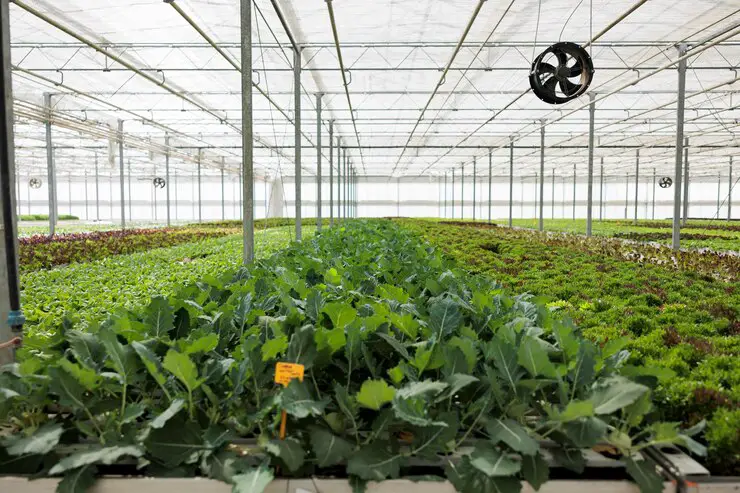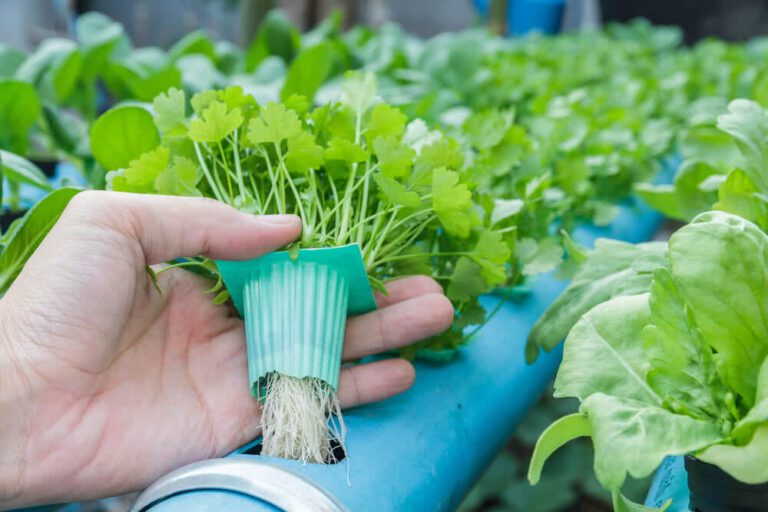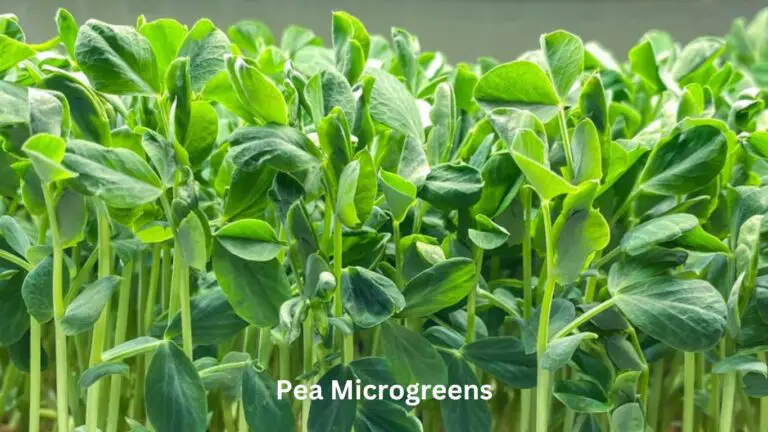Heat Stress in Plants: How to Detect It, How to Dodge It, and How to Fix It
Table of Contents
Detecting Heat Stress in Plants
Heat stress in plants can have detrimental effects on their growth and overall health. It is crucial for gardeners and plant enthusiasts to be able to detect early signs of heat stress in order to take appropriate actions and prevent further damage. By closely observing and monitoring their plants, individuals can look for several key indicators of heat stress.
One of the most noticeable signs of heat stress in plants is wilting. When subjected to high temperatures, plants lose more water through transpiration than they can absorb, leading to dehydration. As a result, leaves may appear limp, droopy, or shriveled. Another common symptom is leaf scorching, where the edges or entire surface of the leaves turn brown, yellow, or even white. This occurs when excessive heat causes the plant to lose more moisture than it can supply, resulting in cellular damage. Additionally, stunted growth and reduced flower or fruit production can also indicate heat stress in plants. When exposed to extreme temperatures, plants prioritize survival over reproduction, redirecting their energy towards maintaining their physiological functions rather than producing new growth or reproductive structures. Monitoring these signs helps gardeners intervene promptly and implement strategies to mitigate heat stress in their plants.
Understanding the Signs of Heat Stress in Plants
Heat stress in plants can have a detrimental impact on their overall health and survival. As a gardener or plant enthusiast, it is crucial to understand the signs of heat stress in plants in order to take appropriate action and prevent further damage. One of the most noticeable signs of heat stress is wilting. When plants are exposed to high temperatures and inadequate moisture levels, they often lose water through their leaves at a faster rate than they can absorb it from the soil. This causes their leaves to wilt and droop, as they struggle to maintain their turgidity. Additionally, heat-stressed plants may exhibit changes in leaf coloration, with leaves turning yellow or brown. This occurs due to the breakdown of chlorophyll, the pigment responsible for capturing sunlight and facilitating photosynthesis. It is important to note that not all wilting or leaf discoloration is caused by heat stress, as other factors such as water deficiency or diseases can also contribute to these symptoms. However, the combination of wilting and leaf color changes in the presence of high temperatures is a strong indication of heat stress in plants. By recognizing these signs early, gardeners can take appropriate action to mitigate the effects of heat stress and help their plants recover.
• Wilting: Plants exposed to high temperatures and inadequate moisture levels lose water through their leaves at a faster rate than they can absorb it from the soil, causing their leaves to wilt and droop.
• Changes in leaf coloration: Heat-stressed plants may exhibit yellow or brown leaves due to the breakdown of chlorophyll, which is responsible for capturing sunlight and facilitating photosynthesis.
• Not all wilting or leaf discoloration is caused by heat stress; other factors such as water deficiency or diseases can also contribute to these symptoms.
• Combination of wilting and leaf color changes in the presence of high temperatures is a strong indication of heat stress in plants.
• Early recognition of these signs allows gardeners to take appropriate action to mitigate the effects of heat stress and help their plants recover.
Identifying the Symptoms of Heat Stress in Plants
Heat stress is a potentially damaging condition that can affect plants when exposed to high temperatures for extended periods. Symptoms of heat stress can vary based on the plant species, but there are some common indicators to look out for. One of the most noticeable signs is wilting, where the leaves and stems droop and become limp. This occurs as the plant tries to reduce surface area and minimize water loss through evaporation. Additionally, yellowing or browning of leaves, especially at the edges, can indicate heat stress. This discoloration is caused by the breakdown of chlorophyll, the pigment responsible for photosynthesis. In severe cases, plants may exhibit scorching, where the leaves develop brown or black patches due to tissue damage.

Heat stress with significant impact
Heat stress can have a significant impact on the overall health and well-being of plants. When exposed to high temperatures for extended periods, plants may experience a range of physiological and metabolic changes that can hinder their growth and development. One of the primary consequences of heat stress is the disruption of normal cellular functions. The excessive heat can lead to the denaturing of proteins, alteration of enzyme activity, and disruption of membrane integrity. These cellular disruptions can have cascading effects on plant metabolism, photosynthesis, and nutrient uptake, ultimately affecting overall plant health.
In addition to cellular damage, heat stress can also disrupt the balance between plant water uptake and loss. Higher temperatures can lead to increased transpiration rates, causing plants to lose significant amounts of water through their leaves. This excessive loss of water can result in wilting, stunted growth, and reduced plant vigor. Furthermore, heat stress can also affect the plants’ ability to absorb water and nutrients from the soil, exacerbating the negative impact on overall plant health. As a result, plants experiencing heat stress may exhibit symptoms such as leaf scorching, leaf curling, yellowing, and premature leaf drop. Understanding the impact of heat stress on plant health is crucial for implementing effective strategies to mitigate its effects and promote plant resilience.

Factors Contributing to Heat Stress in Plants
Heat stress in plants can occur as a result of various factors, many of which are influenced by environmental conditions. One of the primary contributors to heat stress is high temperatures. When temperatures rise above a certain threshold, plants have difficulty regulating their internal temperature, leading to cellular damage and reduced growth.
Another factor that can contribute to heat stress is inadequate moisture. Plants rely on sufficient water availability to regulate their temperature through evapotranspiration. Insufficient moisture can hinder this process and increase the risk of heat stress.
Furthermore, intense sunlight and radiation can exacerbate heat stress in plants. Excessive exposure to sunlight can cause photoinhibition, a process in which the plant’s photosynthetic system is overwhelmed by the high levels of light energy. This can result in the production of reactive oxygen species, leading to oxidative stress and damage to cellular components.
Additionally, soil conditions can also play a role in heat stress. Soil with poor water-holding capacity or inadequate drainage can lead to waterlogged conditions, which impede root respiration and nutrient uptake. This can further compromise a plant’s ability to cope with high temperatures.
Understanding the factors that contribute to heat stress in plants is essential for developing effective strategies to mitigate its impacts. By addressing these underlying causes, gardeners and growers can work towards creating optimal growing conditions that minimize the risk of heat stress and promote the health and productivity of their plants.
Preventing Heat Stress in Plants
Heat stress in plants can have detrimental effects on their overall health and productivity. Therefore, implementing preventive measures is crucial to ensure optimal plant growth and development. One effective strategy to prevent heat stress in plants is to provide adequate shade and ventilation. This can be achieved by strategically placing shade cloth or installing shade structures to shield plants from direct sunlight during the hottest parts of the day. Additionally, creating airflow through the use of fans or natural wind patterns can help dissipate excessive heat and maintain suitable temperatures for plant growth.
Another important factor in preventing heat stress is optimizing irrigation practices. Adequate and timely watering is essential to ensure plants have enough moisture to withstand high temperatures. However, it is important to strike a balance, as overwatering can lead to root rot and other diseases. Monitoring soil moisture levels and adjusting irrigation schedules accordingly can help prevent water stress and provide plants with the necessary hydration to combat heat stress.
By applying these preventive strategies, gardeners can mitigate the risk of heat stress in plants and promote healthy growth. However, it is important to remember that different plant species may have varying heat tolerance levels. Therefore, selecting heat-tolerant plant varieties, such as those native to hotter climates or those with built-in heat resistance traits, can further enhance the prevention efforts. By taking these proactive measures, gardeners can create an environment that is less conducive to heat stress and promote the overall well-being of their plants.
Implementing Strategies to Minimize Heat Stress in Plants
Implementing strategies to minimize heat stress in plants is crucial for maintaining their overall health and productivity. By taking proactive measures to protect plants from extreme temperatures, gardeners can ensure a thriving and vibrant garden throughout the growing season.
One effective strategy is to provide adequate shade and ventilation for plants. Creating a shaded area or using shade cloth can help shield plants from direct sunlight during the hottest parts of the day. Additionally, ensuring proper air circulation by allowing for adequate spacing between plants and using fans can help dissipate excess heat and reduce the risk of heat stress.
Another important strategy is to optimize irrigation practices. Heat-stressed plants may require more frequent watering, as they lose water rapidly through transpiration. Gardeners should monitor soil moisture levels closely and adjust watering schedules accordingly. Additionally, using irrigation techniques that deliver water directly to the roots, such as drip irrigation or soaker hoses, can minimize water loss through evaporation.
It is important to note that different plant varieties have varying levels of heat tolerance. When selecting plant varieties for a garden, choosing heat-tolerant varieties can greatly reduce the risk of heat stress. Researching and opting for plants that are known to thrive in hot climates can increase the likelihood of a successful garden even in sweltering conditions.
In conclusion, implementing strategies to minimize heat stress in plants is essential for their overall well-being. By providing shade and ventilation, optimizing irrigation practices, and selecting heat-tolerant plant varieties, gardeners can create an environment that protects plants from the adverse effects of high temperatures.

Choosing Heat-Tolerant Plant Varieties
When it comes to choosing heat-tolerant plant varieties, there are a few key factors to consider. First and foremost, look for plants that are known for their resilience in high temperatures. These plants have been specifically bred or selected for their ability to thrive in hot climates, making them ideal choices for your garden or landscape.
One important consideration is the plant’s native habitat. Look for species that naturally thrive in hot and arid regions, such as cacti or succulents. These plants have evolved to withstand intense heat and limited water availability, making them well-suited for hot and dry environments.
Additionally, consider the plant’s ability to tolerate full sun exposure. Some plants, like sunflowers or lavender, are well-known for their ability to withstand direct sunlight and high temperatures. Opting for these heat-tolerant varieties will ensure that your plants can handle the heat without suffering from sunburn or wilting.
Lastly, don’t forget to take into account your local climate and growing conditions. Research plants that have been proven to perform well in your specific region. Local gardening resources, nurseries, and agricultural extension services can provide valuable insights and recommendations tailored to your area.
By carefully selecting heat-tolerant plant varieties, you can ensure that your garden thrives even in the hottest of summers.
Optimizing Irrigation Practices to Combat Heat Stress
Optimizing irrigation practices is crucial in combating heat stress in plants. Water is an essential resource for plant growth and development, and ensuring that plants receive adequate moisture during periods of high temperatures is key to their survival. However, it’s important to strike a balance between providing enough water and avoiding overwatering, which can lead to other detrimental effects such as root rot.
To optimize irrigation practices, it is essential to monitor soil moisture levels regularly. This can be done through various methods such as using moisture meters or simply by observing the plants’ foliage and soil. By understanding the specific water requirements of different plant species, you can adjust irrigation schedules accordingly. Some plants may require more frequent watering, while others may thrive with less frequent but deep watering.
Furthermore, consider the timing of irrigation to minimize water loss through evaporation. Watering during the cooler parts of the day, such as early morning or evening, can help reduce water loss and increase water absorption by plants. Additionally, using techniques such as drip irrigation or soaker hoses can target water directly to the plants’ roots, reducing water waste and ensuring efficient water uptake.
By optimizing irrigation practices, gardeners and plant enthusiasts can effectively combat heat stress in plants, promoting their overall health and resilience. It is essential to remember that every plant has unique needs, so understanding individual plant requirements and adapting irrigation practices accordingly can go a long way in maintaining a thriving garden even in the face of challenging heat conditions.

Providing Adequate Shade and Ventilation for Plants
Shade and ventilation play crucial roles in maintaining the health and vitality of plants, especially in hot weather conditions. Adequate shade helps to protect plants from direct sunlight, preventing excessive heat and reducing the risk of heat stress. It allows plants to cool down and regulate their temperature, ensuring optimal growth and development.
One effective way to provide shade for plants is by using structures such as shade cloth or shade netting. These materials reduce the intensity of sunlight, allowing plants to receive filtered light that is less intense and damaging. By strategically positioning the shade cloth, you can create a shaded area for your plants without completely blocking out all light. This ensures that the plants still receive the necessary amount of sunlight for photosynthesis while avoiding the negative effects of excessive heat.
In addition to shade, proper ventilation is essential in preventing heat stress in plants. Good air circulation helps to dissipate heat and humidity, reducing the risk of plant damage. This can be achieved by placing fans or creating openings in polytunnels or greenhouses to allow the movement of air. Ventilation not only helps to cool the plants but also prevents the buildup of excessive moisture, minimizing the risk of fungal diseases.
By providing adequate shade and ventilation for your plants, you create a favorable environment that promotes their overall health and productivity. Remember to consider the specific needs of your plants and adjust the shade and ventilation accordingly. With these simple yet effective measures, you can help your plants combat heat stress and thrive even in hot weather conditions.
| Shade and Ventilation in Hydroponics | Key Information |
|---|---|
| Importance of Shade | – Providing shade protects plants from excessive sunlight, preventing heat stress and dehydration. |
| Shade Structures | – Use structures like shade cloth or adjustable panels to control the amount of sunlight reaching plants. |
| Ventilation Benefits | – Proper ventilation ensures a continuous supply of fresh air, preventing heat buildup and maintaining optimal growing conditions. |
| Natural Ventilation | – Utilize natural ventilation through vents, open windows, or exhaust fans to facilitate air exchange within the hydroponic setup. |
| Artificial Ventilation | – Install fans or ventilation systems to enhance air circulation, preventing stagnant air and promoting better transpiration in plants. |
| Temperature Regulation | – Shade and ventilation together contribute to temperature regulation, avoiding extremes that can negatively impact plant health. |
| Humidity Control | – Adequate ventilation helps control humidity levels, preventing excessive moisture and reducing the risk of mold or fungal issues. |
| Monitoring and Adjustments | – Regularly monitor environmental conditions and adjust shade structures and ventilation systems based on plant needs and external factors. |
| Preventing Pest and Disease | – Proper ventilation reduces the risk of pest infestations and diseases by maintaining an environment less favorable to their development. |
| Optimizing Light Exposure | – Adjustable shade structures allow for optimizing light exposure, ensuring plants receive the right balance for their growth stage. |
Utilizing Mulch to Regulate Soil Temperature
Mulching is a widely used technique in gardening and agriculture to regulate soil temperature and create a favorable environment for plant growth. By applying a layer of mulch around plants, gardeners can protect the soil from extreme heat and maintain a more stable temperature throughout the growing season.
One of the key benefits of mulching is its ability to act as an insulating layer, shielding the soil from direct sunlight and reducing excessive heat absorption. This is particularly important during periods of intense heat, where soil temperatures can skyrocket and negatively impact plant health. By blocking the sun’s rays and preventing the soil from overheating, mulch helps to create a cooler and more favorable microclimate that promotes root development and overall plant vitality.
Moreover, mulching also helps to conserve soil moisture, which further aids in temperature regulation. The layer of mulch acts as a barrier, reducing evaporation and minimizing water loss from the soil. This moisture retention is crucial in hot weather when plants are at a higher risk of water stress. By maintaining adequate soil moisture levels, mulch helps to mitigate the harmful effects of heat stress and ensures plants have the necessary hydration to endure challenging conditions.
In addition to its temperature-regulating properties, mulch offers other benefits such as weed suppression, erosion control, and nutrient enrichment. As an organic material breaks down over time, it releases valuable nutrients into the soil, enriching it and promoting healthy plant growth. These multiple advantages make mulching a valuable technique for gardeners aiming to protect their plants from heat stress and create optimal growing conditions.

Monitoring and Adjusting Fertilizer Application during Heat Stress
Appropriate management of fertilizer application is crucial during periods of heat stress to ensure the health and resilience of plants. High temperatures can significantly affect the availability and uptake of nutrients, leading to imbalances and deficiencies that further exacerbate the stress on plants. Monitoring and adjusting fertilizer application during heat stress is therefore essential for maintaining optimal plant nutrition and supporting their ability to withstand challenging conditions.
When monitoring fertilizer application, it is important to consider the specific nutrient requirements of different plants during heat stress. Some nutrients, such as potassium and phosphorus, play a vital role in enhancing plant tolerance to high temperatures. These nutrients are involved in various physiological processes, including water regulation, enzyme activity, and cellular metabolism. Monitoring the levels of these nutrients in the soil and adjusting fertilizer application accordingly can help plants cope better with heat stress.
Moreover, during periods of heat stress, nutrient uptake by plants may be hindered due to reduced root activity and increased water stress. In such cases, adjusting the timing and frequency of fertilizer application can have a significant impact on nutrient availability. For instance, splitting the total fertilizer dose into smaller, more frequent applications can improve nutrient absorption and minimize losses. Additionally, applying fertilizers during cooler parts of the day, such as early morning or late afternoon, can optimize nutrient uptake and minimize nutrient leaching from the soil.
By closely monitoring and adjusting fertilizer application based on the specific needs of plants during heat stress, gardeners can support their plants’ resilience and mitigate the detrimental effects of high temperatures. However, it is important to note that the appropriate fertilizer adjustment strategies may vary depending on the plant species, soil conditions, and regional climate. Consulting with local agricultural extension services or experienced horticulturists can provide valuable insights and personalized guidance for effective fertilizer management during heat stress. Proper nutrition management during challenging conditions is vital to ensure the health and survival of plants, and it is an essential component of successful gardening practices.

Recovering and Rehabilitating Plants affected by Heat Stress
After a period of intense heat stress, it is crucial to take immediate action to recover and rehabilitate affected plants. Heat stress can have severe impacts on plant health and productivity, but with careful intervention, plants can often bounce back and regain their vigor.
First and foremost, provide plants with proper irrigation to rehydrate them and restore their moisture levels. Deep watering is particularly beneficial as it encourages plants to develop deep root systems, which can better withstand future periods of heat stress. Additionally, consider using organic compost or mulch around plants to help retain moisture in the soil and provide a more stable growing environment.
To further aid in the recovery process, it is important to ensure that the plants receive adequate nutrition. This can be achieved by adjusting fertilizer applications to meet the specific needs of the plants during their recovery period. However, be cautious not to over-fertilize, as this can exacerbate stress on the plants. Seek guidance from a qualified horticulturist or refer to scientific recommendations to determine the appropriate nutrient ratios for the particular plant species.
In order to optimize recovery, it may be necessary to gently prune damaged or wilted plant parts. This step promotes new growth and redirects the plant’s energy towards its healthier sections. However, it is crucial to exercise caution and only remove the parts that are truly beyond recovery, as excessive pruning can further stress the plants. Sterilize pruning tools before and after use to prevent the spread of diseases.
Moreover, providing shade and proper ventilation can greatly assist in plant rehabilitation. Position shading materials or structures strategically to shield plants from intense sunlight and reduce heat absorption. Additionally, ensure adequate airflow around the plants by allowing for proper spacing and limited obstruction from surrounding objects or structures. This facilitates the cooling of plant tissues and encourages transpiration, aiding in the recovery process.
Finally, closely monitor the plants throughout the recovery period. Regularly check for any signs of improvement or further deterioration to assess the effectiveness of the implemented strategies. Be patient, as plant recovery from heat stress can take time, and adjustments to the rehabilitation methods may be necessary based on observed outcomes.
By following these recovery and rehabilitation techniques, it is possible to improve the chances of plants successfully overcoming the effects of heat stress. While prevention is always the best approach, timely intervention and appropriate care can help rescue and revive plants, allowing them to thrive once again.
| Recovering Plants from Heat Stress | Key Steps and Information |
|---|---|
| Identification of Heat Stress | – Recognize symptoms such as wilting, yellowing, or scorched leaves, indicating potential heat stress in plants. |
| Immediate Action | – Move affected plants to a shaded area or reduce light intensity immediately to minimize further stress. |
| Hydration and Moisture | – Ensure proper hydration by watering plants adequately. Check the moisture levels in the growing medium and adjust irrigation if needed. |
| Cooling Measures | – Use cooling methods such as misting, placing ice packs, or using fans to lower the ambient temperature around the plants. |
| Gradual Exposure to Light | – Gradually reintroduce plants to normal light levels over a few days to prevent shock. Avoid sudden transitions that can stress the plants further. |
| Monitoring and Observation | – Continuously monitor plants for any signs of recovery or deterioration. Adjust environmental conditions as needed based on plant response. |
| Nutrient Support | – Provide a balanced nutrient solution to support recovery. Consider using a diluted solution initially to avoid overwhelming stressed plants. |
| Pruning and Removal of Damaged Parts | – Trim and remove damaged or scorched parts of the plants. This helps redirect energy to healthier areas and promotes new growth. |
| Enhanced Ventilation | – Improve air circulation around plants to aid in cooling and reduce heat stress. Ensure proper ventilation systems are in place and functioning effectively. |
| Shade Protection | – Implement shade structures to protect plants from intense sunlight, especially during peak heat hours. Adjust shading based on daily temperature fluctuations. |
| Patience and Observation | – Allow time for recovery, and be patient in observing gradual improvements in plant health. Adjust care practices based on ongoing observations. |
How can I detect heat stress in plants?
Heat stress in plants can be detected through various signs such as wilting, leaf rolling, leaf yellowing, and stunted growth.
What are the symptoms of heat stress in plants?
Symptoms of heat stress in plants include leaf scorching, leaf drop, decreased fruit production, and overall decline in plant health.
What factors contribute to heat stress in plants?
Factors that contribute to heat stress in plants include high temperatures, intense sunlight, low humidity, poor soil conditions, and lack of adequate water supply.
How can I prevent heat stress in plants?
Heat stress in plants can be prevented by providing adequate shade, proper irrigation, using mulch to regulate soil temperature, choosing heat-tolerant plant varieties, and ensuring good soil quality.
How do I minimize heat stress in plants?
Strategies to minimize heat stress in plants include implementing shading and ventilation techniques, optimizing irrigation practices, adjusting fertilizer application, and monitoring plant health closely.
What are heat-tolerant plant varieties?
Heat-tolerant plant varieties are those that have the ability to withstand high temperatures and are less likely to experience heat stress. These varieties have been specifically bred or selected for their heat resistance.
How can I optimize irrigation practices to combat heat stress?
To combat heat stress, it is important to water plants deeply and less frequently, preferably during the cooler parts of the day. This helps to prevent soil moisture loss and keeps the plants properly hydrated.
Why is providing shade and ventilation important for plants during heat stress?
Providing shade and ventilation helps to reduce the intensity of sunlight and lower the temperature around the plants. This can significantly alleviate heat stress and improve plant health.
How does mulch help regulate soil temperature?
Mulch acts as a protective layer on the soil surface, reducing heat absorption and preventing rapid soil temperature fluctuations. It helps to keep the soil cool and retain moisture, benefiting plants during heat stress.
Should fertilizer application be adjusted during heat stress?
Yes, fertilizer application should be monitored and adjusted during heat stress. Excessive fertilization can further stress the plants, so it is important to apply fertilizers judiciously and according to the specific needs of the plants.
How can I recover and rehabilitate plants affected by heat stress?
To recover and rehabilitate plants affected by heat stress, it is crucial to provide them with ample water, nutrients, and proper care. Pruning damaged parts, applying organic matter, and creating a favorable growing environment can aid in the recovery process.

Beck Wakeford is a dedicated writer at SouthElMonteHydroponics, with a fervent enthusiasm for agriculture and technological innovation. Armed with a degree in Agricultural Engineering from a leading university, Beck specializes in hydroponic systems design, automation, and optimization. Their passion for merging traditional farming with cutting-edge technology drives them to explore novel solutions for sustainable food production. Beck’s expertise and keen interest in the intersection of engineering and agriculture make them a valuable asset in the quest for efficient and eco-friendly farming practices. Through their writing, Beck aims to inspire others to embrace the potential of hydroponics in shaping a more sustainable future.






